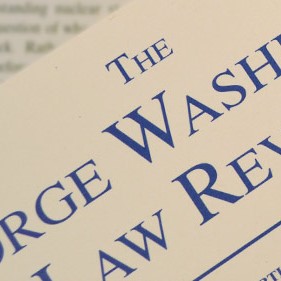Aaron Y. Tang · June 2011
79 GEO. WASH. L. REV. 1103 (2011)
The vast disparity in the quality of educational opportunity afforded by schools in similar geographic areas is not news to many policymakers and public interest litigators. The past four decades have witnessed no shortage of policies and school finance lawsuits aimed at leveling the playing field and improving the quality of education provided in the nation’s lowest performing schools. A primary goal of the lawsuits in particular has been to force states to increase school spending.
This Article seeks to challenge a different practice in American public education: the sacrosanct notion that a local school district may, as a matter of law, exclude a child from its schools simply on the basis of their residency—even if the district would be compensated for the full cost of enrolling and educating her.
To meet his task, this Article proceeds in four parts. Part I begins by describing the current policy arena of public school choice, where commentators and school districts alike have dramatically overstated the reach of open enrollment laws as they stand. Although many districts and states have enacted enrollment laws that are “open” in name, in reality, virtually all of them function to allow schools to exclude students on the basis of residency. Part II provides theoretical and some empirical support for replacing these exclusionary practices with policies that would promote public school choice and improve the quality of education offered to disadvantaged children. It does so by discussing the impact of enrollment policies on four important values: property rights, liberty, educational efficiency, and equality of opportunity.
Part III addresses the question of why closed enrollment practices persist as the norm in states and districts throughout the nation if, as suggested in Part II, a comprehensive program of public school choice would actually further important American interests and values. In briefly analyzing the political economy of public school choice, Part III describes how the policy arena is dominated by intense suburban and education establishment interests that oppose efforts to break down district barriers. Responding to this political obstacle and representing the primary focus of this paper, Part IV proposes a novel legal claim grounded in the Article IV Privileges and Immunities Clause of the federal Constitution, which can compel successful school districts to enroll nonresident students. By way of conclusion, Part V discusses some of the practical considerations implicated by the proposed claim and the nature of the relief students would receive under this proposal.

